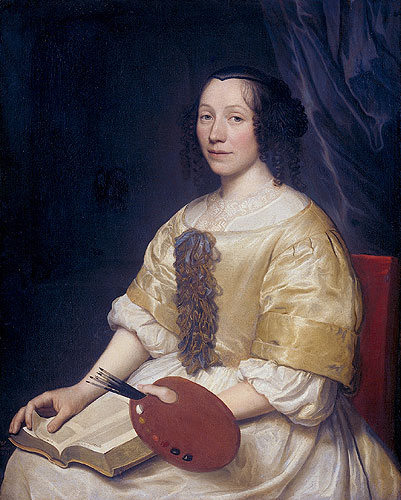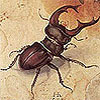|
усднфмхйх
тнрнцпютш
ймхцх Х юркюяш
яхярелю фхбнцн
лхпю Б
хккчярпюжхъу
хгдюрекэярбн
люярепяйюъ
онкегмше
яяшкйх
|
Maria van Oosterwyck
Maria Van Oosterwyck
Maria van Oosterwijk
Maria van Oosterwijck
Maria von Oosterwyck
(August 20, 1630, Nootdorp -
November 12, 1693, Uitdam)

1671, by Wallerant Vaillant
оЕПЕИРХ Б юПР-ЦЮКЕПЕЧ Maria van Oosterwyck
Biography
Dutch Baroque painter. She was one of only three significant
women artists in Dutch Golden Age painting, of whom
Rachel Ruysch was also a flower painter, and
Judith Leyster
mainly not (the German botanic illustrator
Maria Sybille Merian also moved to Amsterdam).
She was a student of Jan Davidsz de Heem. Van Oosterwijk worked in
Delft and later in Amsterdam (1675-1689), where she lived opposite
the workshop of Willem van Aelst. She was popular with European
royalty, including Emperor Leopold, Louis XIV of France and William
III of England. Despite this, as a woman, she was not allowed to
join the painters' guild.
Her work was highly regarded, and according to Houbraken she gained
international fame, selling pieces eventually to various heads of
state, including 3 pieces for the King of Poland. She never married,
and died at the house of her sister's son, Jacobus van Assendelft.
Her work is in many prominent collections, including the Mauritshuis,
the Fitzwilliam Museum (Cambridge), the Kunsthistorisches Museum
(Vienna), the Palatine Gallery in Palazzo Pitti (Florence), the
Royal Collection, and the Cincinnati Art Museum.
link
|
оЕПЕИРХ Б юПР-ЦЮКЕПЕЧ Maria van Oosterwyck
яЯШКЙХ - Links
Biography
http://en.wikipedia.org/wiki/Maria_van_Oosterwijk
|
|
